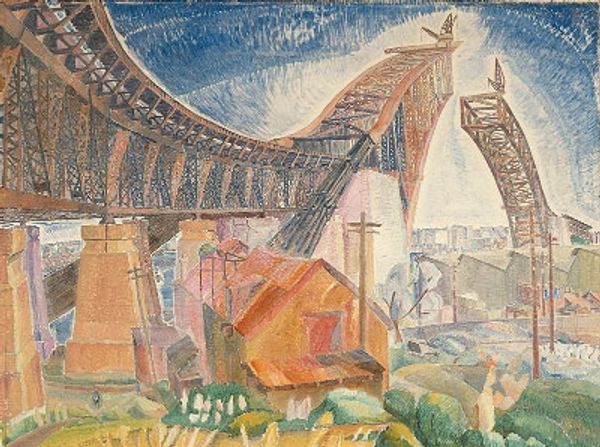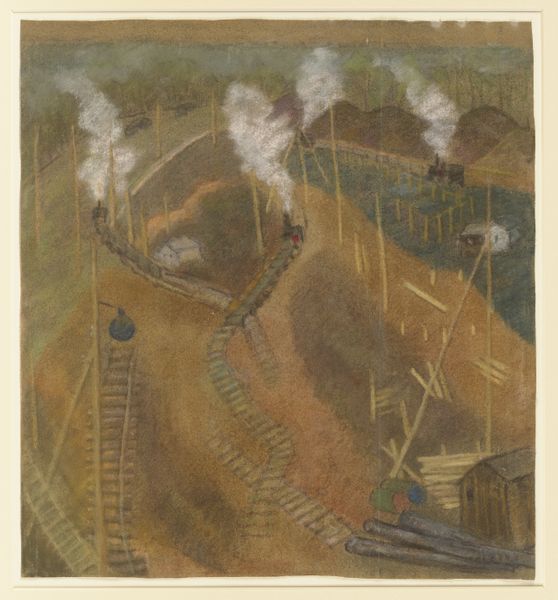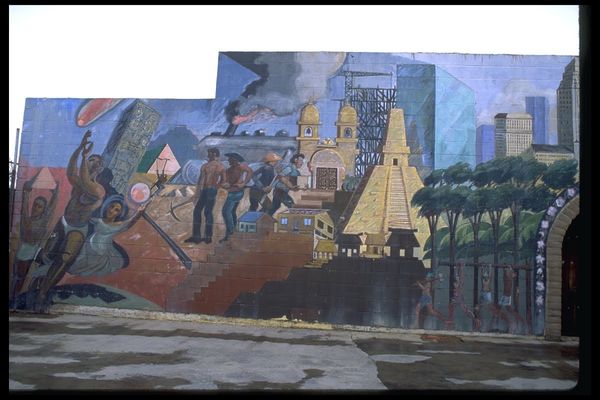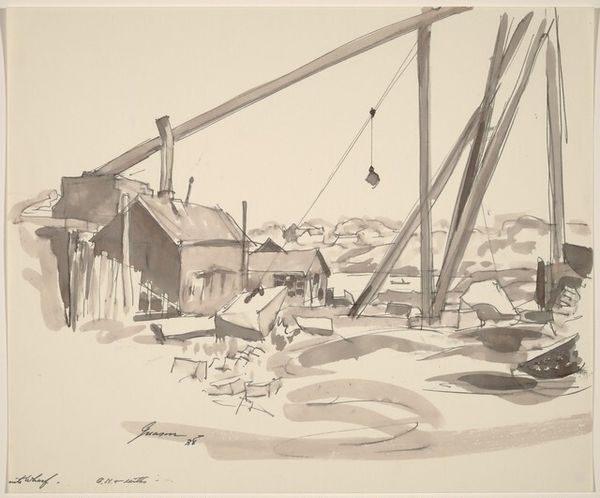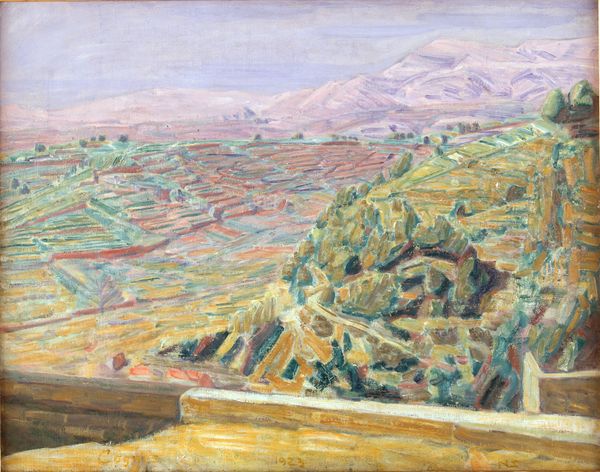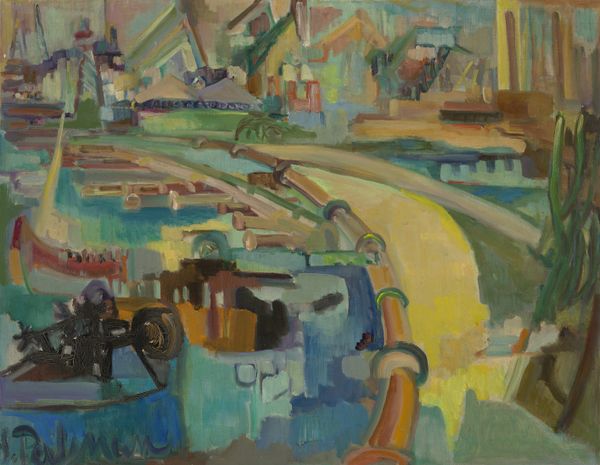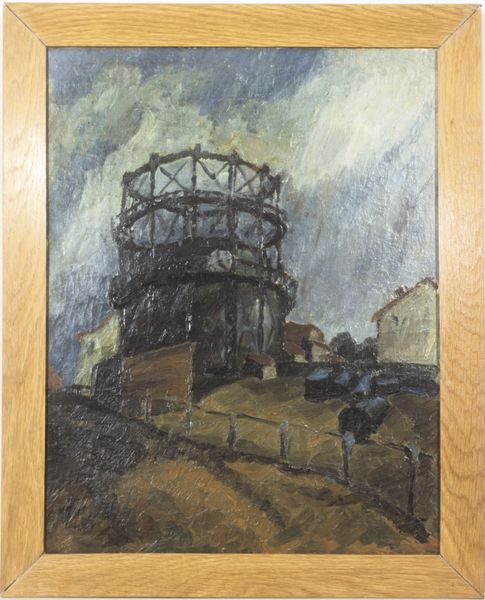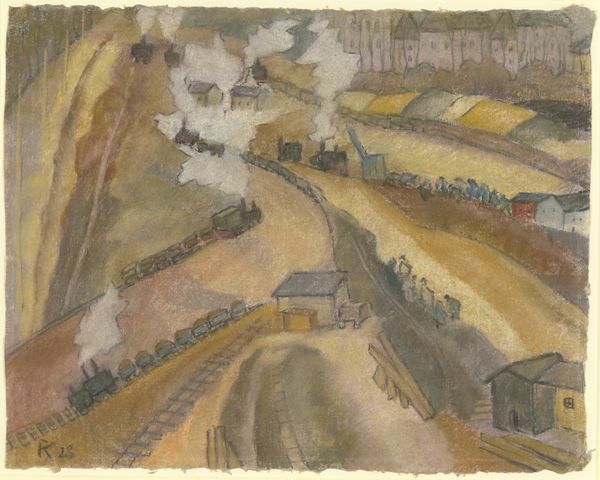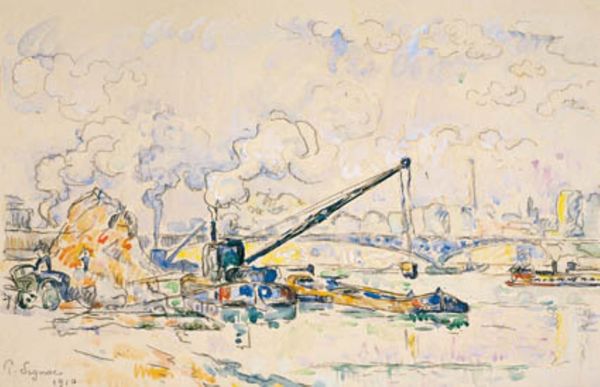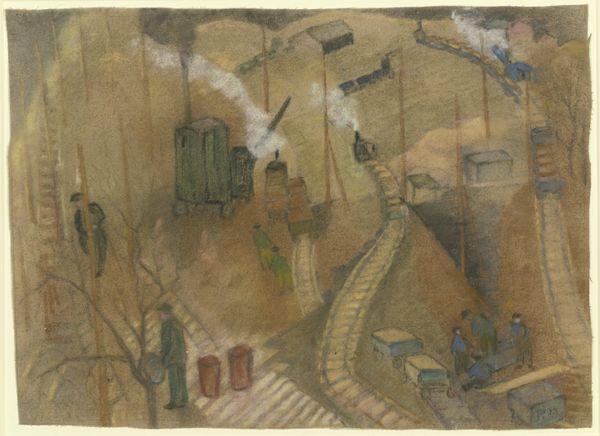
painting, oil-paint
#
painting
#
oil-paint
#
landscape
#
soviet-nonconformist-art
#
impressionist landscape
#
oil painting
#
realism
Dimensions: 97 x 104 cm
Copyright: Mariam Aslamazian,Fair Use
Curator: Here we have Mariam Aslamazian's "The Constructing Bridge in Yerevan," painted in 1952. The artist employs oil paints to capture the building of an arched bridge spanning a deep gorge. What's your first take? Editor: It evokes a powerful sense of ambition and human endeavor, but there's also an inherent fragility. The scaffolding seems so delicate against the immensity of the landscape. It makes you wonder about the meaning carried in such an endeavor, beyond simply transport or utility. Curator: Indeed. This was painted during the Soviet era; consider the weight of constructing monuments to progress. Aslamazian, though celebrated, still existed within constraints regarding acceptable themes and representations. To depict this scene would, in some ways, serve as a powerful political gesture celebrating progress during the post-war era. Editor: That reminds me of the ancient Roman aqueducts, each arch representing continuity and reaching. Visually, we are given multiple arcs repeating—smaller incomplete bridge segments suggesting this continuity through space and time. Curator: Good eye. Moreover, think of how infrastructure projects can reinforce particular social orders or erase existing narratives. This bridge could represent connection and improved trade and could also symbolize a restructuring of daily routines and social boundaries of Armenian people in the Soviet Era. Editor: Yes, that’s apparent through the way workers are situated. The tiny human figures against the span symbolize both our capacity for great creation, yet also relative insignificance. Are these figures symbolic, would you say, or are they simply figures that create a sense of perspective? Curator: Likely, both. The composition invites a dual reading: one of heroic labor but also of individual vulnerability within the grand scheme of Soviet industrialization. Also, note the vantage point—we aren't at eye level, suggesting a detached observation, which potentially signals non-conformity with dominant narratives. Editor: So true. All the imagery that emerges from that era carries an enormous symbolic weight, as artists were both documenting and carefully interpreting monumental undertakings. The way Aslamazian shows human persistence alongside engineering, it reflects human adaptability. I’ll think about that the next time I cross a bridge. Curator: And I am reminded to reconsider any monument that seems “self-evident.” Always dig deeper into the powers at play! Thank you.
Comments
No comments
Be the first to comment and join the conversation on the ultimate creative platform.
